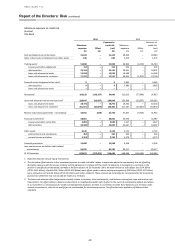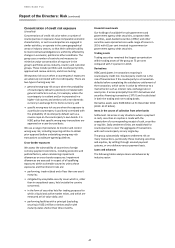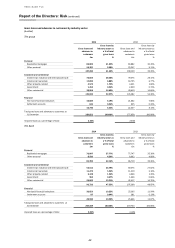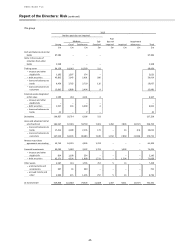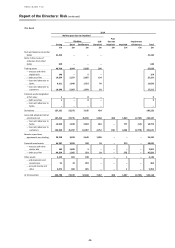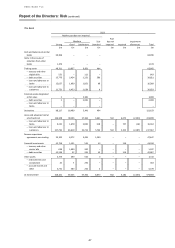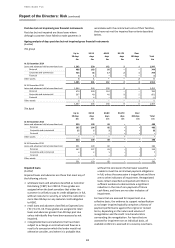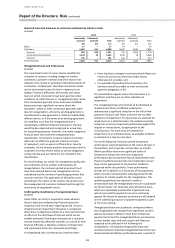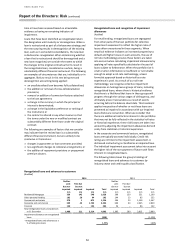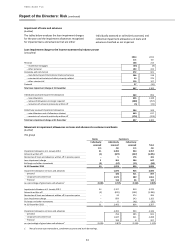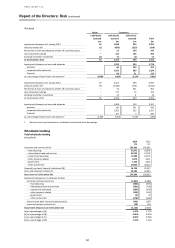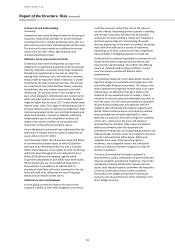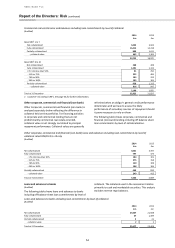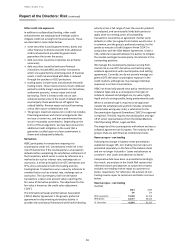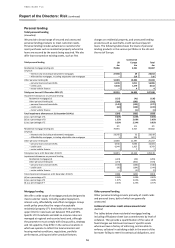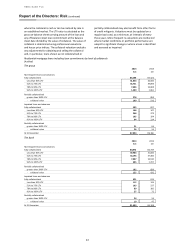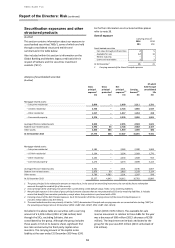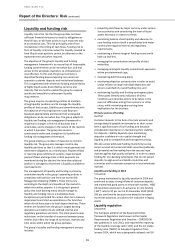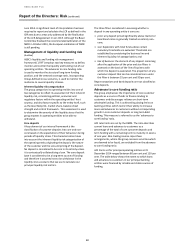HSBC 2014 Annual Report Download - page 52
Download and view the complete annual report
Please find page 52 of the 2014 HSBC annual report below. You can navigate through the pages in the report by either clicking on the pages listed below, or by using the keyword search tool below to find specific information within the annual report.
HSBC BANK PLC
Report of the Directors: Risk (continued)
50
time or have been assessed based on all available
evidence as having no remaining indicators of
impairment.
Loans that have been identified as renegotiated retain
this designation until maturity or derecognition. When a
loan is restructured as part of a forbearance strategy and
the restructuring results in derecognition of the existing
loan, such as in some debt consolidations, the new loan
is disclosed as renegotiated. When determining whether
a loan that is restructured should be derecognised and a
new loan recognised, we consider the extent to which
the changes to the original contractual terms result in
the renegotiated loan, considered as a whole, being a
substantially different financial instrument. The following
are examples of circumstances that are, individually or in
aggregate, likely to result in this test being met and
derecognition accounting being applied:
• an uncollateralised loan becomes fully collateralised;
• the addition or removal of cross-collateralisation
provisions;
• removal or addition of conversion features attached
to the loan agreement;
• a change in the currency in which the principal or
interest is denominated;
• a change in the liquidation preference or ranking of
the instrument; or
• the contract is altered in any other manner so that
the terms under the new or modified contract are
substantially different from those under the original
contract.
The following are examples of factors that we consider
may indicate that the revised loan is a substantially
different financial instrument, but are unlikely to be
conclusive in themselves:
• changes in guarantees or loan covenants provided;
• less significant changes to collateral arrangements; or
• the addition of repayment provisions or prepayment
premium clauses.
Renegotiated loans and recognition of impairment
allowances
(Audited)
For retail lending, renegotiated loans are segregated
from other parts of the loan portfolio for collective
impairment assessment to reflect the higher rates of
losses often encountered in these segments. When
empirical evidence indicates an increased propensity to
default and higher losses on such accounts, the use of
roll rate methodology ensures these factors are taken
into account when calculating impairment allowances by
applying roll rates specifically calculated on the pool of
loans subject to forbearance. When the portfolio size is
small or when information is insufficient or not reliable
enough to adopt a roll-rate methodology, a basic
formulaic approach based on historical loss rate
experience is used. As a result of our roll-rate
methodology, we recognise collective impairment
allowances on homogeneous groups of loans, including
renegotiated loans, where there is historical evidence
that there is a likelihood that loans in these groups will
progress through the various stages of delinquency, and
ultimately prove irrecoverable as a result of events
occurring before the balance sheet date. This treatment
applies irrespective of whether or not those loans are
presented as impaired in accordance with our impaired
loans disclosure convention. When we consider that
there are additional risk factors inherent in the portfolios
that may not be fully reflected in the statistical roll rates
or historical experience, these risk factors are taken into
account by adjusting the impairment allowances derived
solely from statistical or historical experience.
In the corporate and commercial sectors, renegotiated
loans are typically assessed individually. Credit risk
ratings are intrinsic to the impairment assessment. A
distressed restructuring is classified as an impaired loan.
The individual impairment assessment takes into account
the higher risk of the non-payment of future cash flows
inherent in renegotiated loans.
The following table shows the group’s holdings of
renegotiated loans and advances to customers by
industry sector and credit quality classification.
Renegotiated loans and advances to customers
(Audited)
2014
2013
Neither
past
due nor
impaired
Past due
but not
impaired
Impaired
Total
Neither
past
due nor
impaired
Past due
but not
impaired
Impaired
Total
£m
£m
£m
£m
£m
£m
£m
£m
Residential Mortgages
339
142
548
1,029
399
150
551
1,100
Other personal lending
102
26
64
192
144
23
85
252
Commercial real estate
378
1
875
1,254
396
23
1,148
1,567
Corporate and commercial
509
42
1,703
2,254
690
94
2,045
2,829
Financial
140
–
124
264
56
–
86
142
Total renegotiated loans and advances
at 31 December
1,468
211
3,314
4,993
1,685
290
3,915
5,890
Impairment allowance on renegotiated
loans
(930)
(1,128)
- renegotiated loans and advances as a
% of total gross loans
1.77%
1.98%


